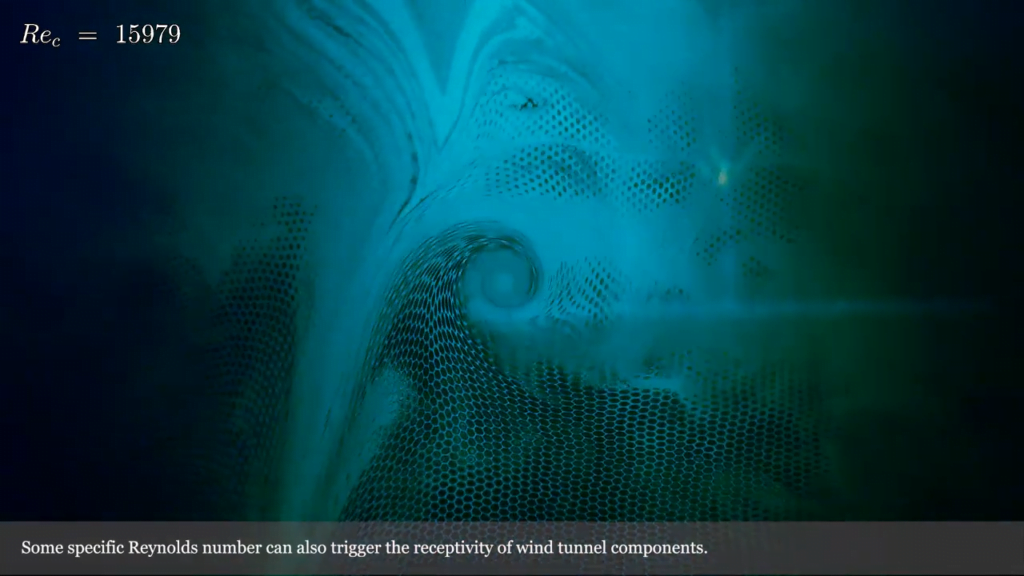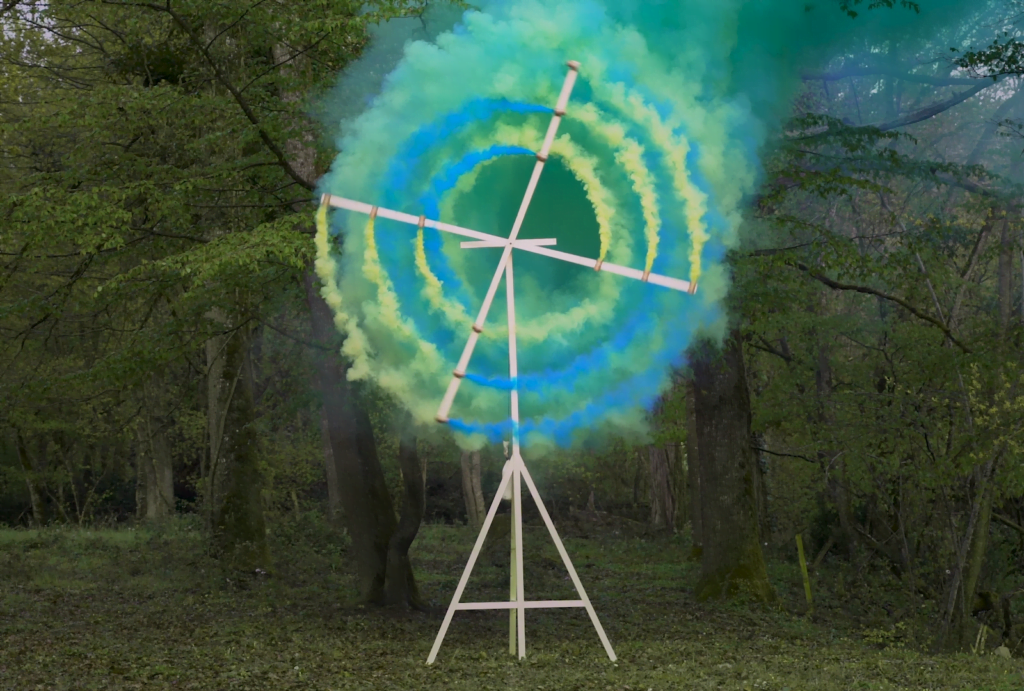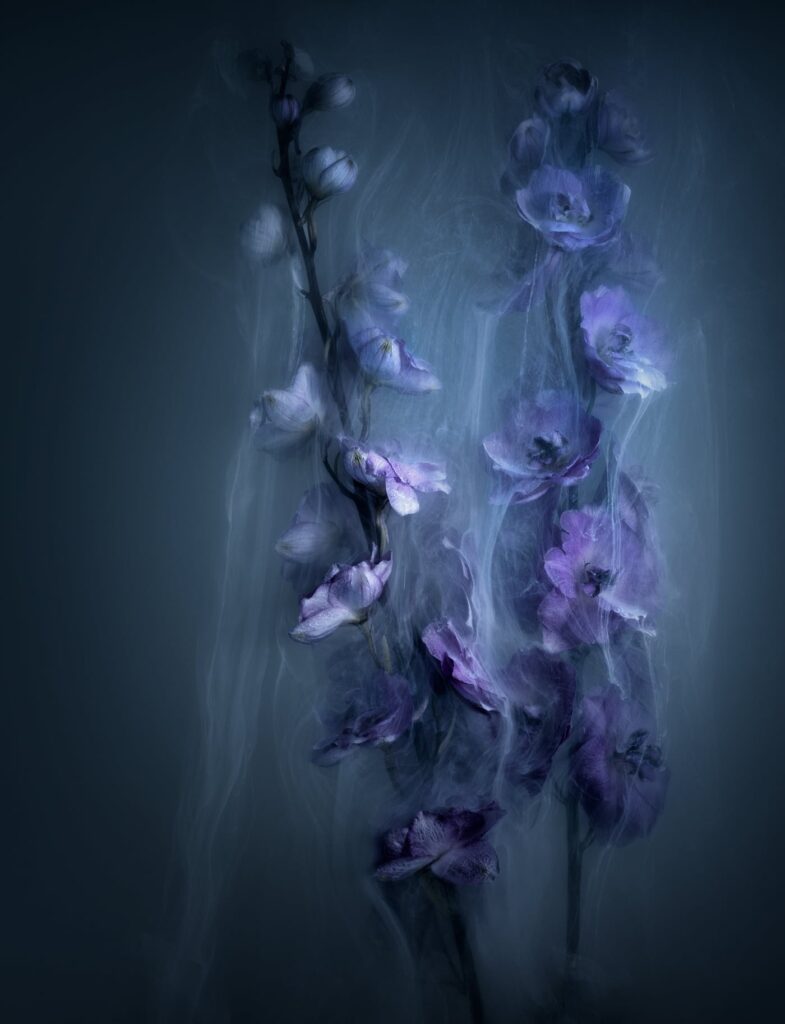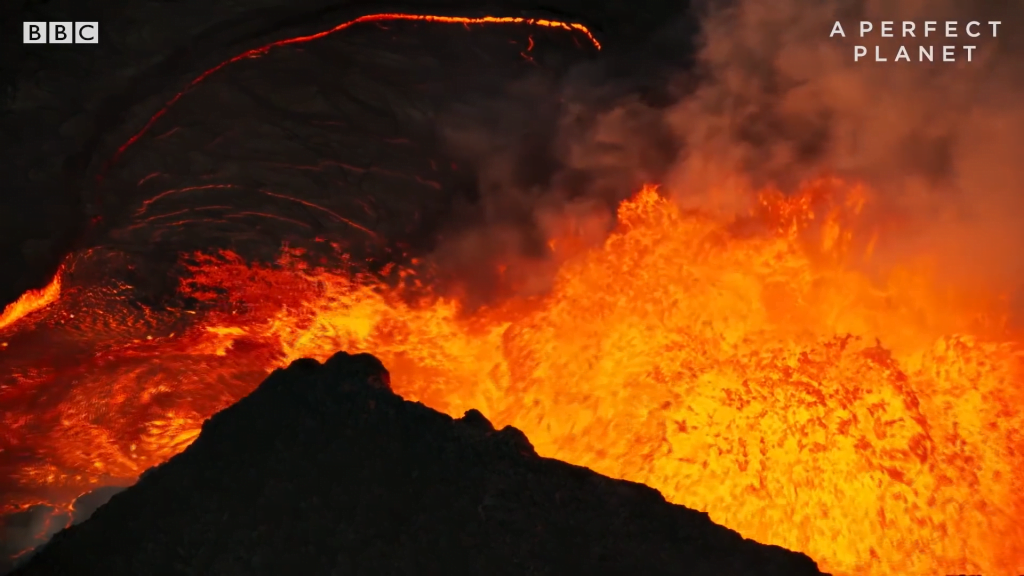The intense heat from wildfires fuels updrafts, lifting smoke and vapor into the atmosphere. As the plume rises, water vapor cools and condenses around particles (including ash particles) to form cloud droplets. Eventually, that creates the billowing clouds we see atop the smoke. These pyrocumulus clouds, like this one over California’s Line fire in early September 2024, can develop further into full thunderstorms, known in this case as pyrocumulonimbus. The storm from this cloud included rain, strong winds, lightning, and hail. Unfortunately, storms like these can generate thousands of lightning strikes, feeding into the wildfire rather than countering it. (Image credit: L. Dauphin; via NASA Earth Observatory)
Search results for: “smoke”

Etna’s Blowing Rings
Mount Etna has long been known for its smoke rings, but thanks to the opening of a new vent on the volcano’s southeast crater, it’s now making more rings than ever. Etna’s smoke rings are, more precisely, vortex rings — produced in the same way dolphins, swimmers, and whales make vortex rings: a sudden push of air through a roughly circular opening. It’s likely that Etna and other volcanoes make far more rings than those we see; we’re limited to noticing only the ones that entrain smoke and condensation to make them visible. (Video and image credit: The Straits Times; via Colossal)

Visualizing Wingtip Vortices
At the ends of an airplane‘s wings, the pressure difference between air on top of the wing and air below it creates a swirling vortex that extends behind the aircraft. In this video, researchers recreate this wingtip vortex in a wind tunnel, visualized with laser-illuminated smoke. The team shows the progression from no vortex to a strong, coherent vortex as the flow in the tunnel speeds up. Along the way, there are interesting asides, like the speed where the honeycomb used to smooth the upstream flow is suddenly visibly imprinted on the smoke! (Video and image credit: M. Couliou et al.)

“Nimbus”
Ephemeral clouds drift through unusual places in artist Berndnaut Smilde‘s works. He creates his clouds from smoke and water, launching them for a matter of seconds before they dissipate. During that time, he and his collaborators take photographs of the clouds, creating a memento of a time already past. Catch more of Smilde’s short-lived weather on his website and Instagram. (Image credit: B. Smilde and collaborators; via Colossal)

“Sfumato”
Handmade kinetic sculptures by artists Marion Pinaffo and Raphaël Pluvinage spin and paint the sky in colorful smoke in “Sfumato”. Named for an artistic technique in which shading gradually changes tone and hue, the installation was built, the artists note, “without motors, electronics, computer generated images, or artificial intelligence”. Just pure hands-on engineering and physics. Watch the short video of the installation in action for the full effect. You can find more of their work on their website, Vimeo, and Instagram. (Image and video credit: M. Pinaffo and R. Pluvinage; via Colossal)
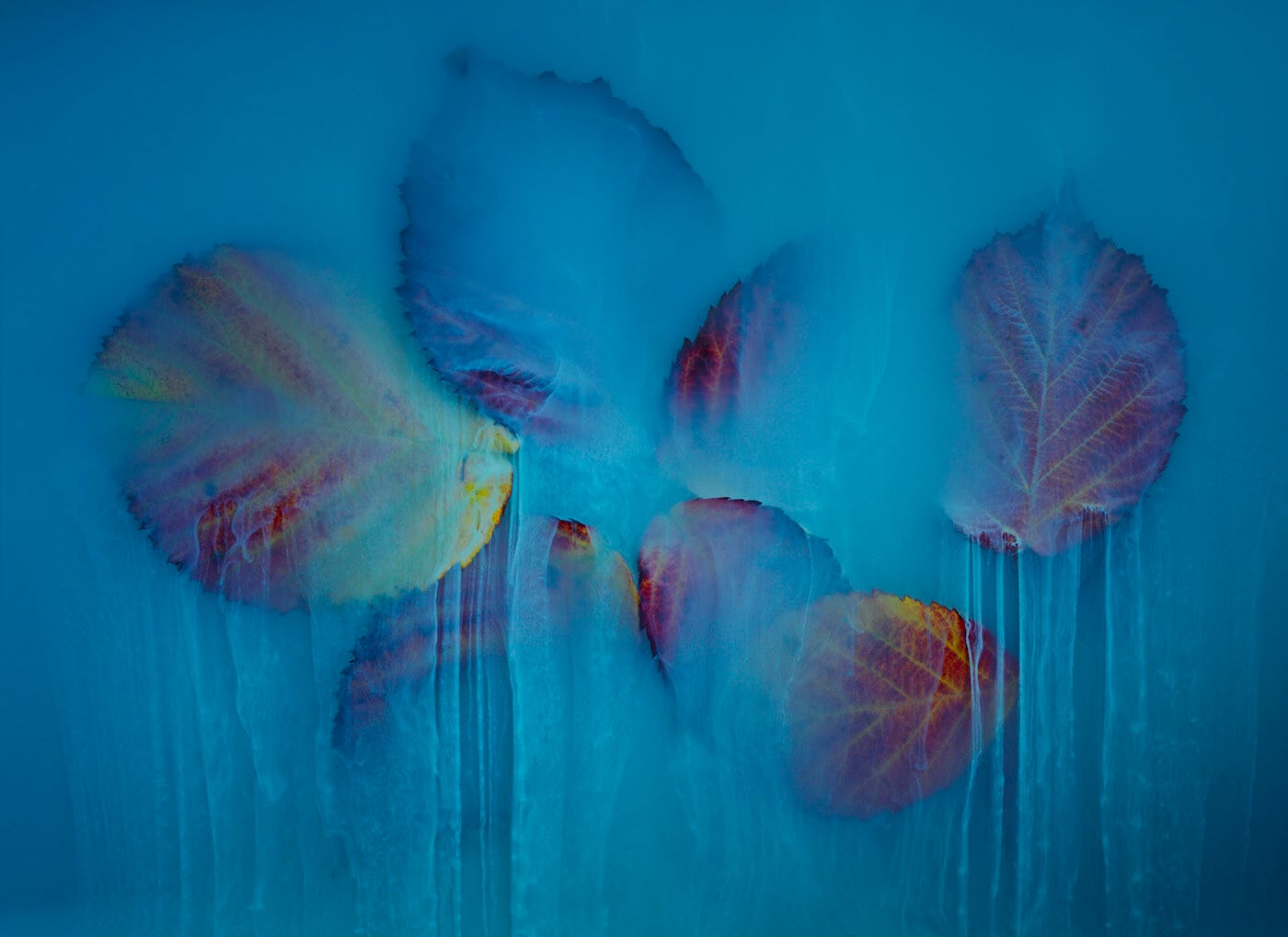
Flowers Through a Hazy Veil
A smoke-like haze obscures colorful bouquets in these photographs from artist Robert Peek. To achieve the effect, Peek submerges his subjects underwater with white dye that sinks due to its greater density. The wakes traced by the dye are impressively laminar, so the dye must drift rather slowly past each petal. The overall effect is beautifully dream-like. You can find more of Peek’s work on Behance and Instagram. (Image credit: R. Peek; via Colossal)

“Metamorphe”
A smoke-like haze drifts over surreal landscapes in the “Metamorphe” series by Reuben Wu and Jenni Pasanen. Though fluidic in appearance, these pieces are a merger between Wu’s drone light photography and Pasanen’s AI-assisted digital creations. Even so, the images are extremely evocative of fluid motion, connected as they are to human senses (like smell, hearing, and touch) that often rely directly on fluid dynamics. For more, check out the artists’ sites and Instagram. (Image credits: R. Wu and J. Pasanen; via Colossal)

Better Inhalers Through CFD
As levels of air pollution rise, so does the incidence of pulmonary diseases like asthma. Treatments for these diseases largely rely on inhalers containing drug particles that need to be carried into the small bronchi of the lungs. To better understand how the process works, researchers used computational fluid dynamics to simulate how air and particles travel through the human respiratory tract.
The team found that larger particles tended to get stuck in the mouth instead of making it down into the lungs. This problem was made worse at high inhalation rates because the particles’ inertia was too large for them to make the sharp turn down into the trachea. In contrast, smaller particles could travel down into the lungs and into the smaller branches there before settling. The authors concluded that inhalers should use fine drug particles to maximize delivery into the lungs. They also note that adjusting inhalers to deliver more medication to the lungs may also lower the overall price because less of the dosage gets wasted in the patient’s mouth.
Of course, the study’s results also serve as a warning about the dangers of air pollution from fine particulates. Here in Colorado, our summers are punctuated with wildfire smoke, much of it in the form of tiny particles about the same size as the drug particles in this study. If fine drug particles are effective at making it into the smaller branches of our lungs, so are those pollutants. That’s a good reason to stay inside in smoky conditions or use a high-quality N-95 mask while out and about. (Image credit: coltsfan; research credit: A. Tiwari et al.; via Physics World; submitted by Kam-Yung Soh)

Lava and Life
Kilauea’s 2018 eruption gave us some of the most stunning volcanic footage ever seen, a tradition carried on in this BBC footage. As powerful and destructive as lava is, it’s also critical to life as we know it here on Earth. Volcanoes are a piece of the tectonic activity on our planet that drives the carbon cycle, without which we’d have no oceans or breathable atmosphere. It’s tough to imagine the geological scales over which these cycles act, but fortunately, there are numerical simulations to help! (Image and video credit: BBC Earth)
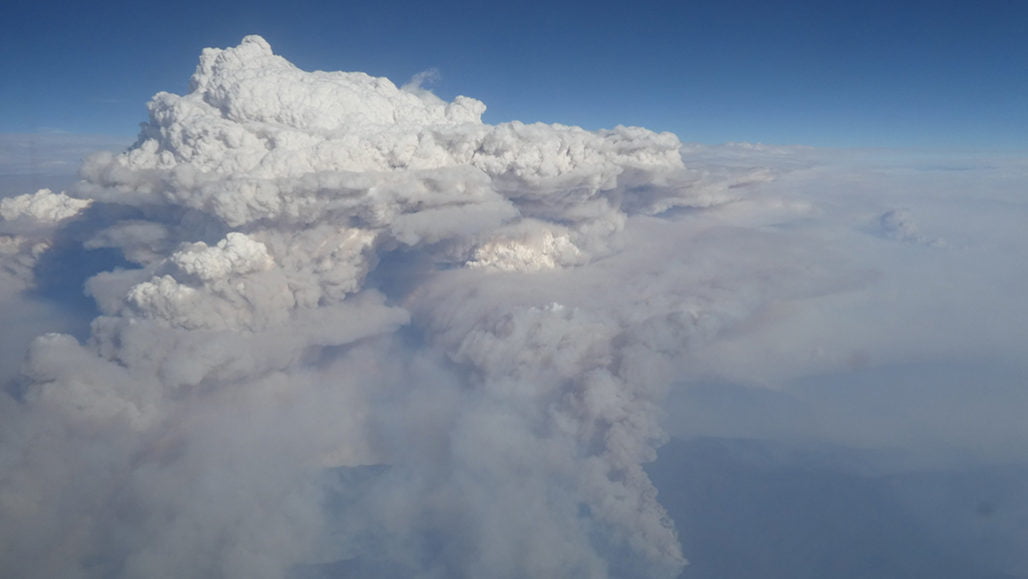
Stratospheric Effects of Wildfires
Australia’s bushfires from earlier this year are offering new insights into how pyrocumulonimbus clouds can affect our stratosphere. A massive, uncontrolled blaze between December 29th and January 4th generated a towering, turbulent cloud of smoke like the one shown above.
Using meteorological data, a new study shows this enormous cloud initially rose to 16 km in altitude, then began a months-long trek that circled the globe. The smoke plume ultimately stretched to over 1,000 km wide and reached a record altitude of over 31 km. Inside the plume, concentrations of water vapor and carbon monoxide were several hundred percent higher than normal stratospheric air.
Researchers found the plume extremely slow to dissipate, possibly due to strong rotational winds surrounding it. This is the first time scientists have observed these shielding winds, and work is still underway to determine how and why they formed. (Image credit: M. Macleod/Wikimedia Commons; research credit: G. Kablick III et al.; via Science News; submitted by Kam-Yung Soh)






